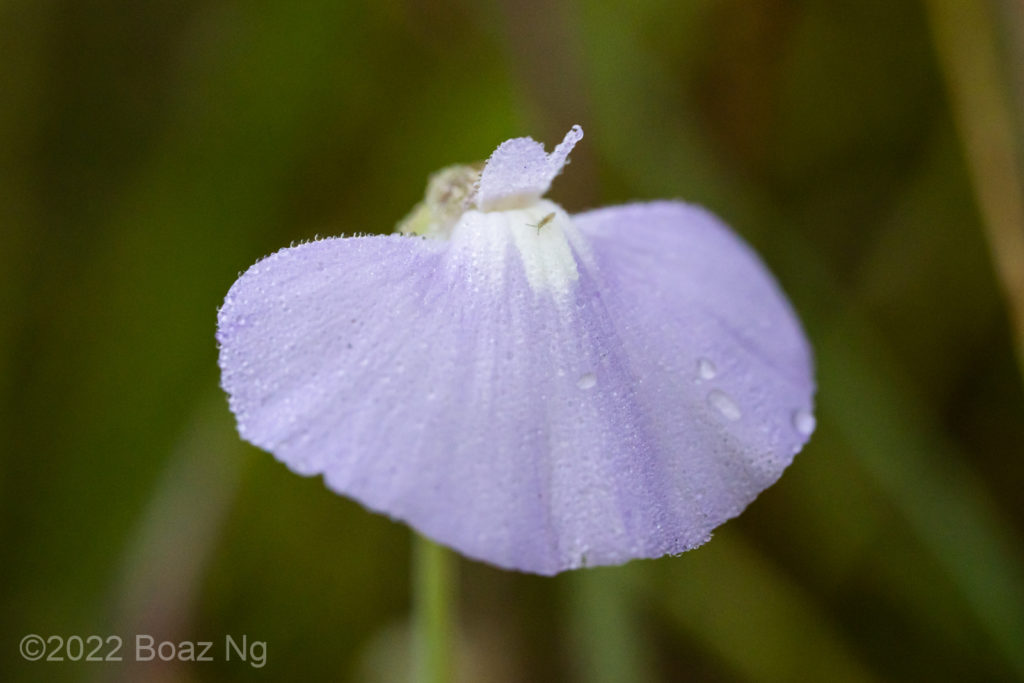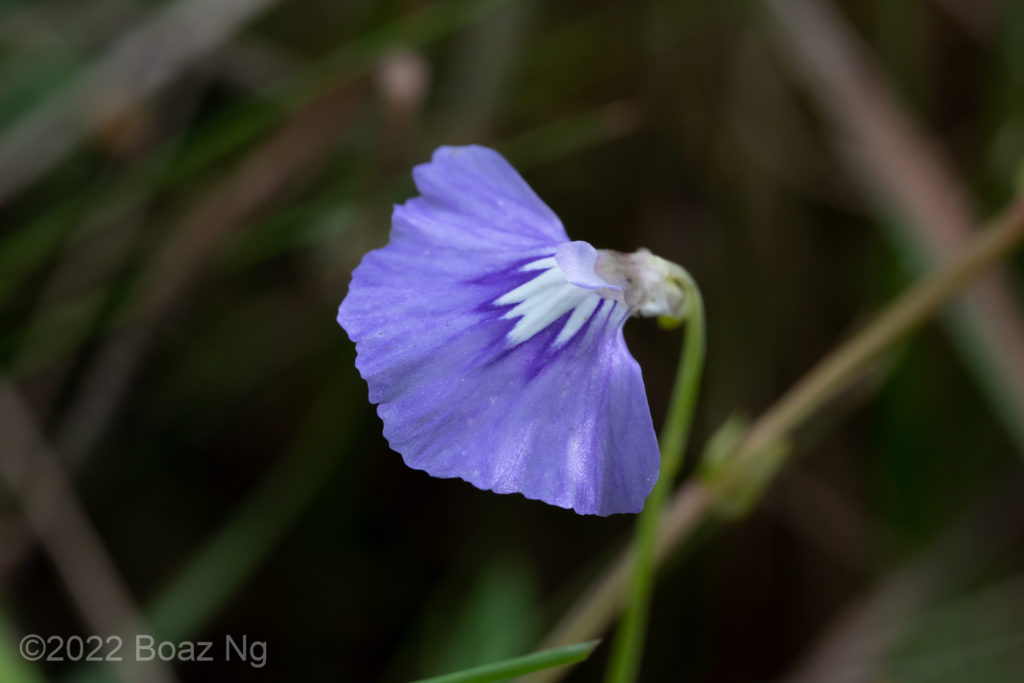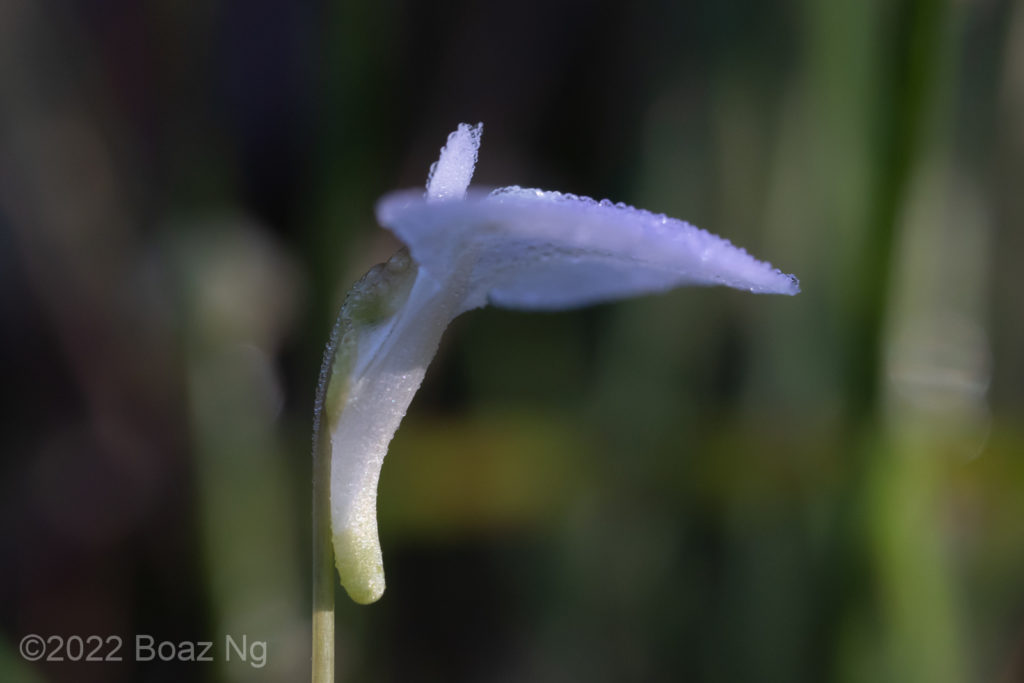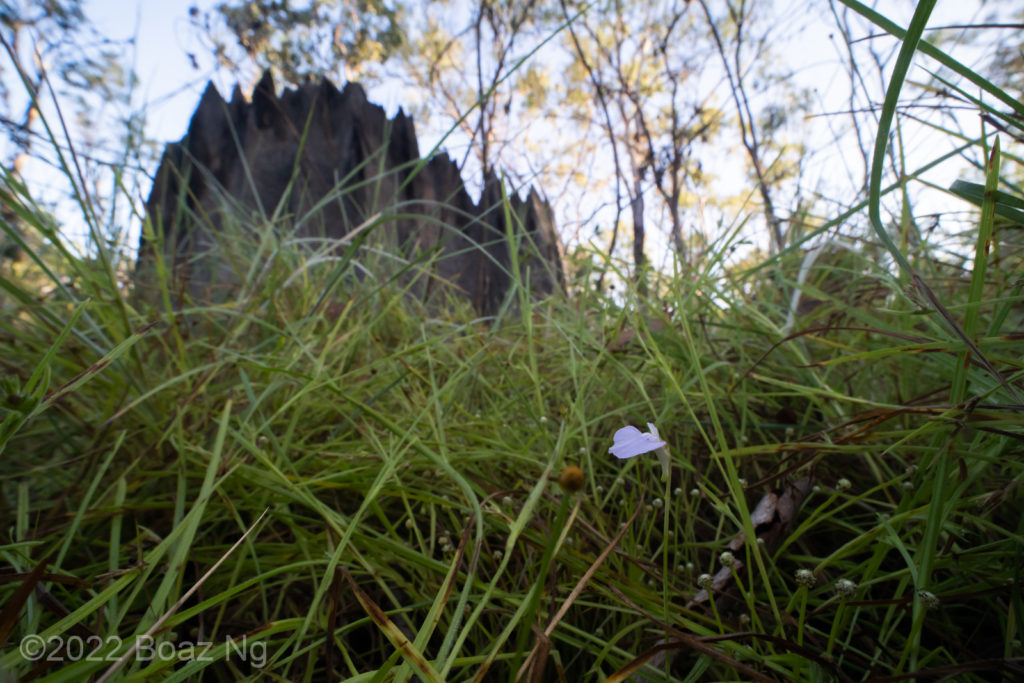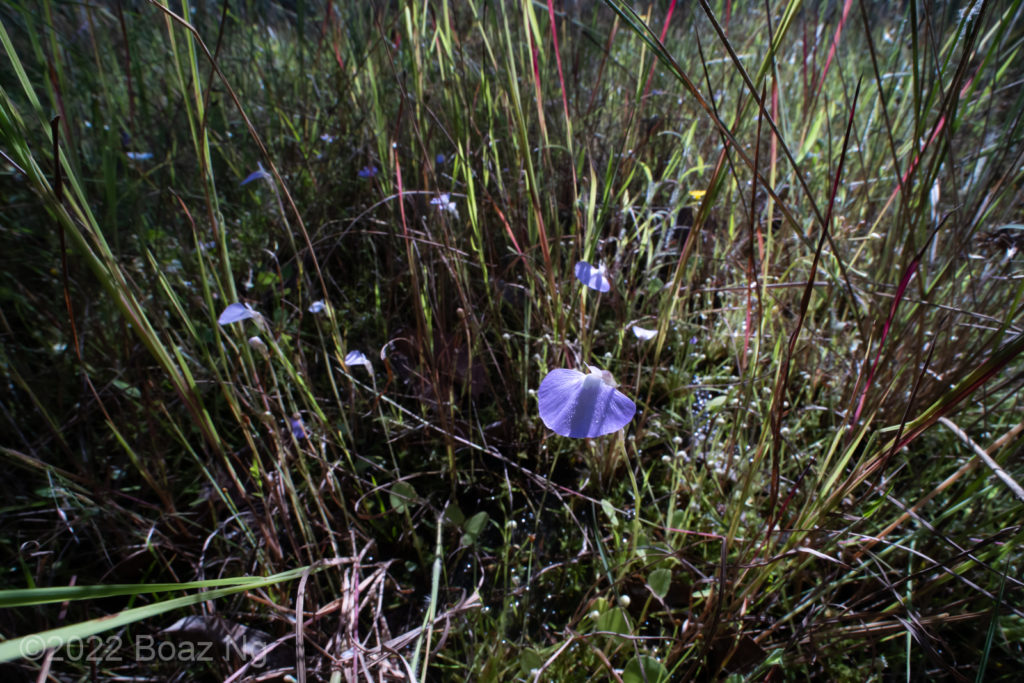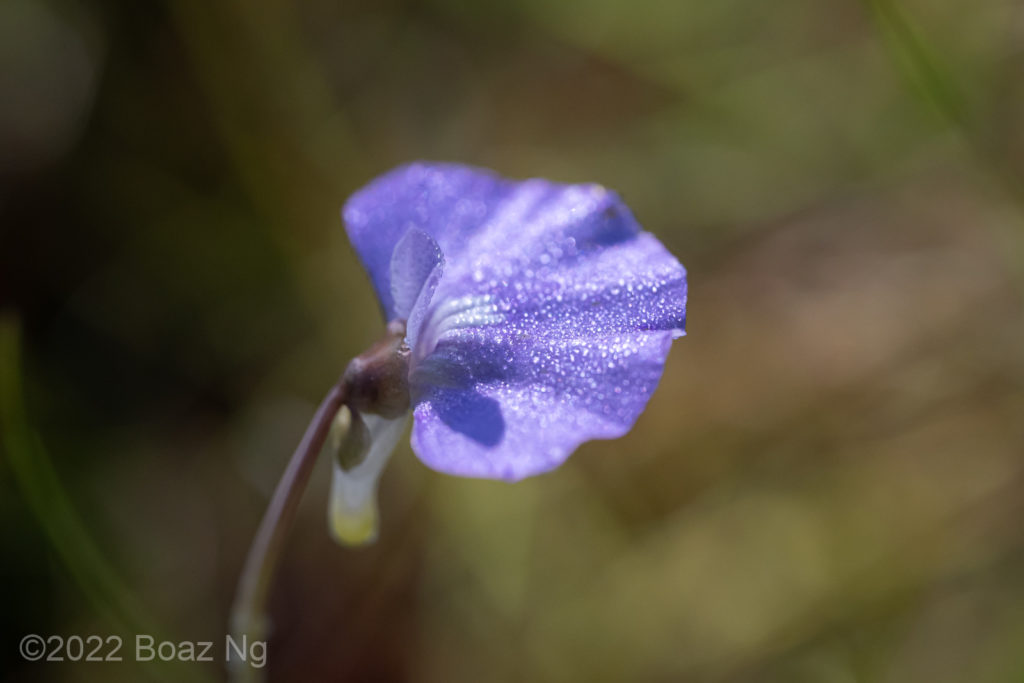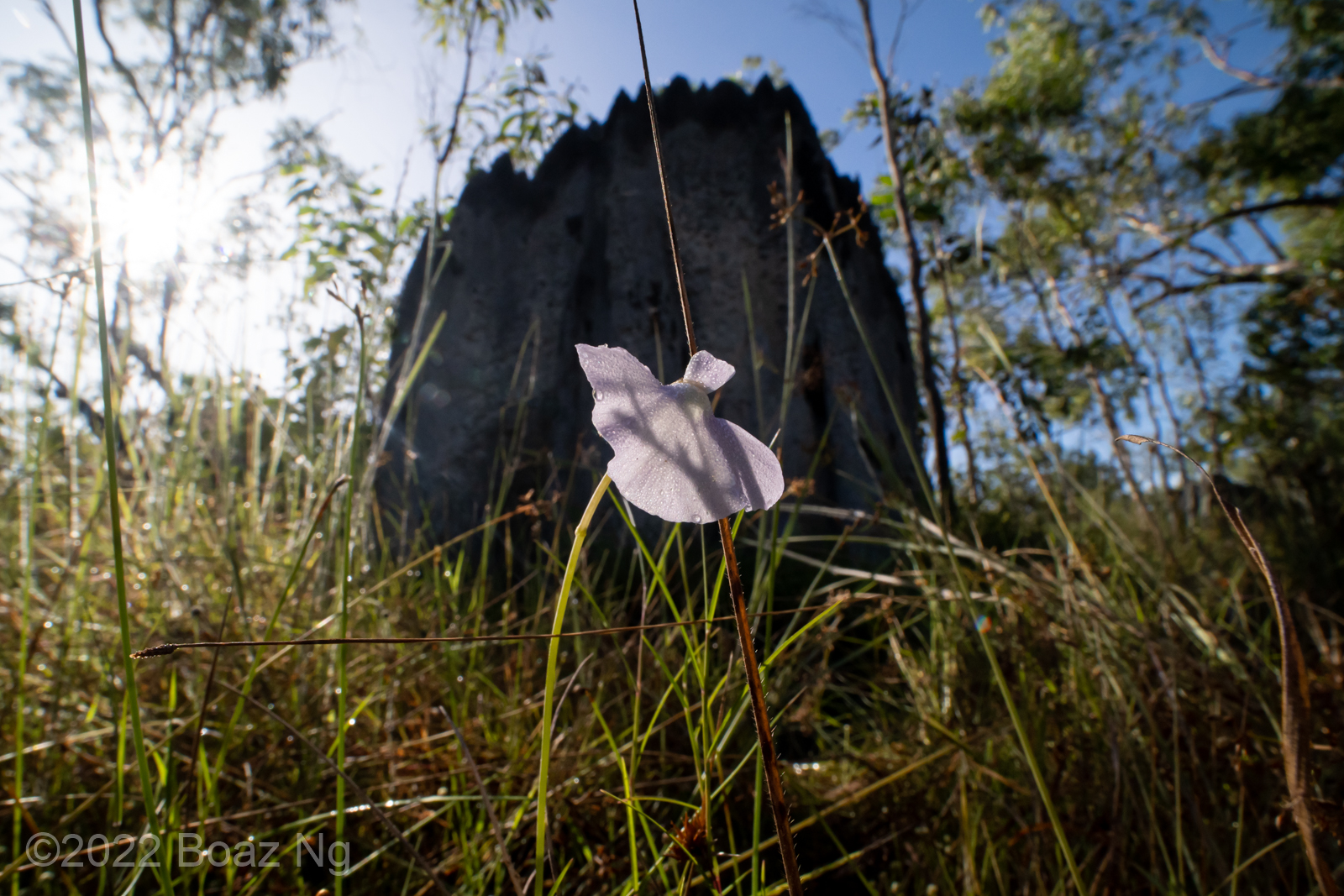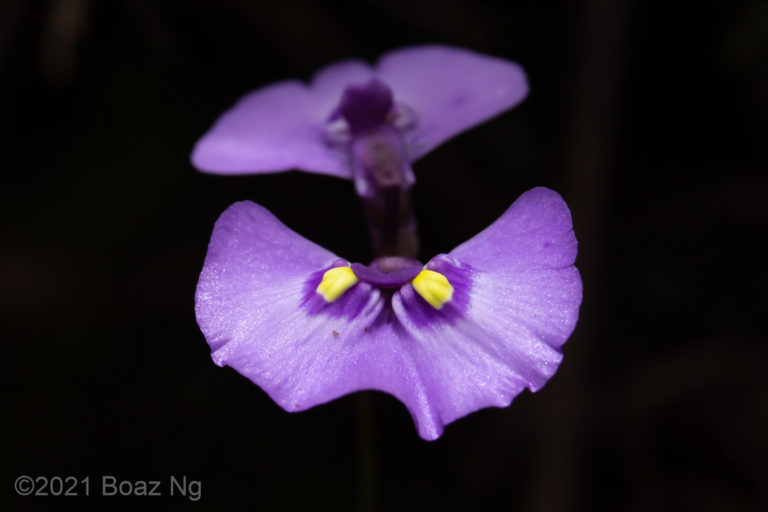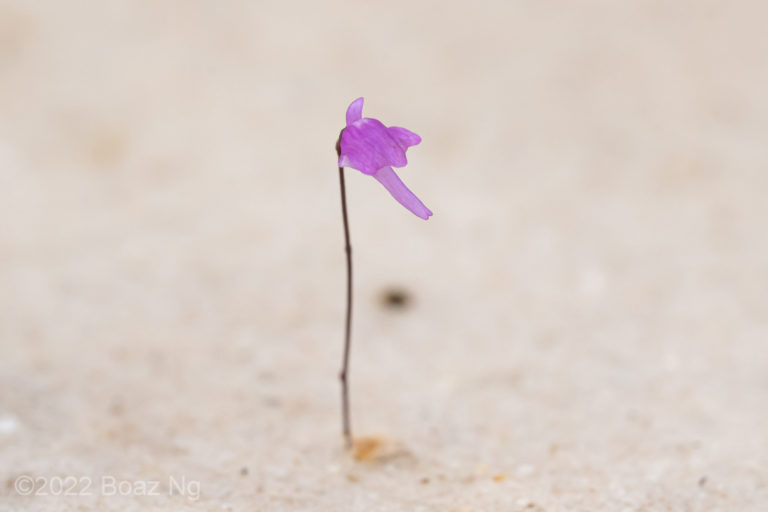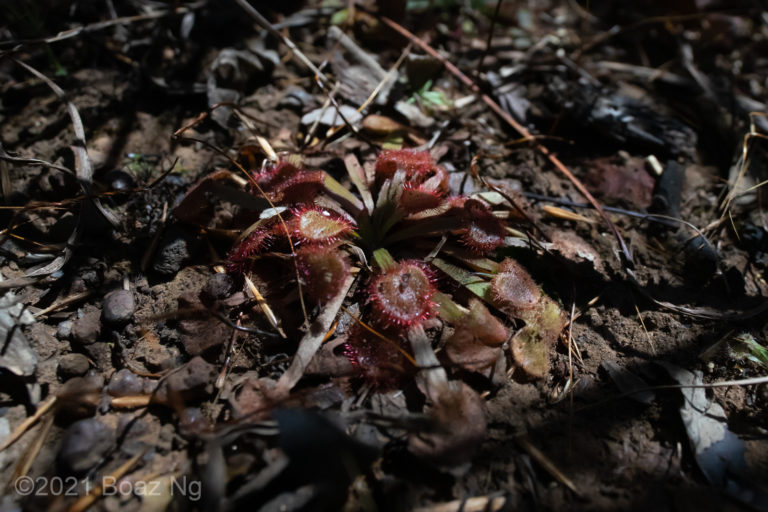Utricularia terraereginae is a species of Bladderwort endemic to Cape York, NE Australia. It is named after the state of Queensland (terra = earth, regina = queen).
Utricularia terraereginae has medium-sized, light purple flowers. The lower corolla lip is skirt-shaped and broad, with rounded edges towards the extremities. The palate region has many very shallow white lobes that are sometimes fringed with dark purple. The upper corolla lip is notched at the centre. The spur is broad at the base and narrower at the extremity, with a rounded apex. The end of the spur bends such that the tip faces downwards or forwards.
The species is endemic to the flatter parts of Cape York around Laura and Yarraden, where it grows in creek lines in the area. These creeks are shallow but rather persistent and hold water well into the dry season. Within these creeks, U. terraereginae grows in association with magnetic termite mounds, which prefer the same waterlogged loamy soils. The species is fairly reliably present in the right habitat and can occur in local abundance (although it does not grow in great density as say U. chrysantha does).
In Queensland, U. terraereginae could potentially be confused with U. blackmanii, although the two species are not known to overlap in range. The two species share a similar colour scheme and floral morphology but can be distinguished through examination of the spur (the spur of U. terraereginae is bent downwards or forwards whereas that of U. blackmannii is thrust backwards).
n.b. Many authorities still refer to this plant as Utricularia terrae-reginae although the latest naming conventions discourage the use of hyphens in the specific name.
